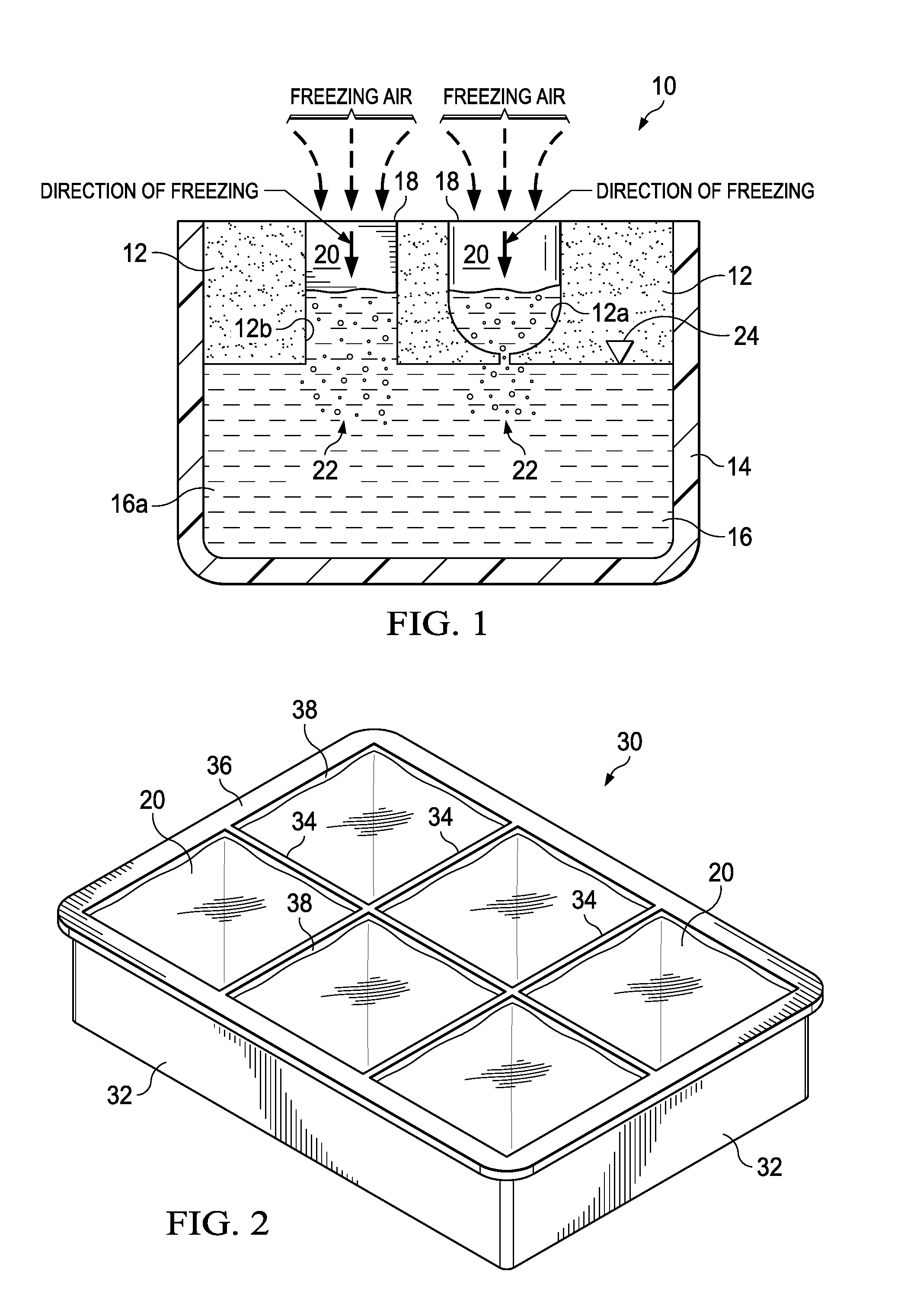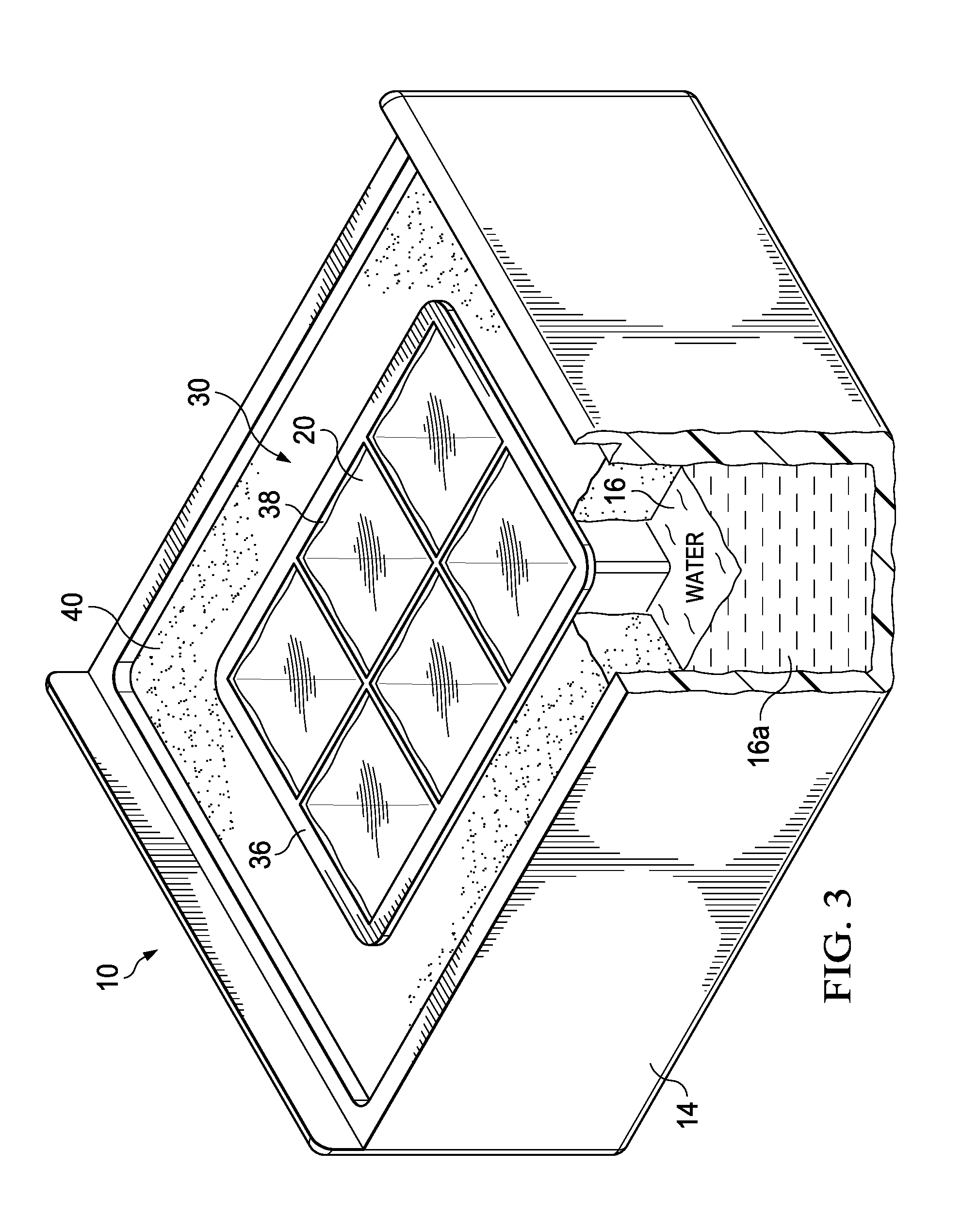Transparent Ice Maker
a transparent ice maker and transparent technology, applied in the field of transparent ice makers, can solve the problems of limited ability to produce clear ice cubes, electro-mechanical energy input and assembly requirements, and/or specific construction materials, and achieve the effect of reducing the surface area to volume ratio and preventing additional solid ice growth
- Summary
- Abstract
- Description
- Claims
- Application Information
AI Technical Summary
Benefits of technology
Problems solved by technology
Method used
Image
Examples
Embodiment Construction
[0020]Certain terminology is used herein for convenience only and is not to be taken as a limitation on the present invention. Relative language used herein is best understood with reference to the drawings, in which like numerals are used to identify like or similar items. Further, in the drawings, certain features may be shown in somewhat schematic form.
[0021]Without being bound by theory, the inventive apparatus and method described herein provide for the production of substantially clear, if not transparent, ice shapes by taking advantage of the thermodynamic differential in the rate of heat loss resulting from different SA / V ratios between an ice mold shape and a liquid water reservoir as described in detail below. Generally, an object or shape gains or loses heat through its surface area, so the larger the surface area of the object or shape the faster the associated rate of heat loss or heat gain. Likewise, an object or shape with a smaller surface area will experience a slow...
PUM
 Login to View More
Login to View More Abstract
Description
Claims
Application Information
 Login to View More
Login to View More - R&D
- Intellectual Property
- Life Sciences
- Materials
- Tech Scout
- Unparalleled Data Quality
- Higher Quality Content
- 60% Fewer Hallucinations
Browse by: Latest US Patents, China's latest patents, Technical Efficacy Thesaurus, Application Domain, Technology Topic, Popular Technical Reports.
© 2025 PatSnap. All rights reserved.Legal|Privacy policy|Modern Slavery Act Transparency Statement|Sitemap|About US| Contact US: help@patsnap.com



